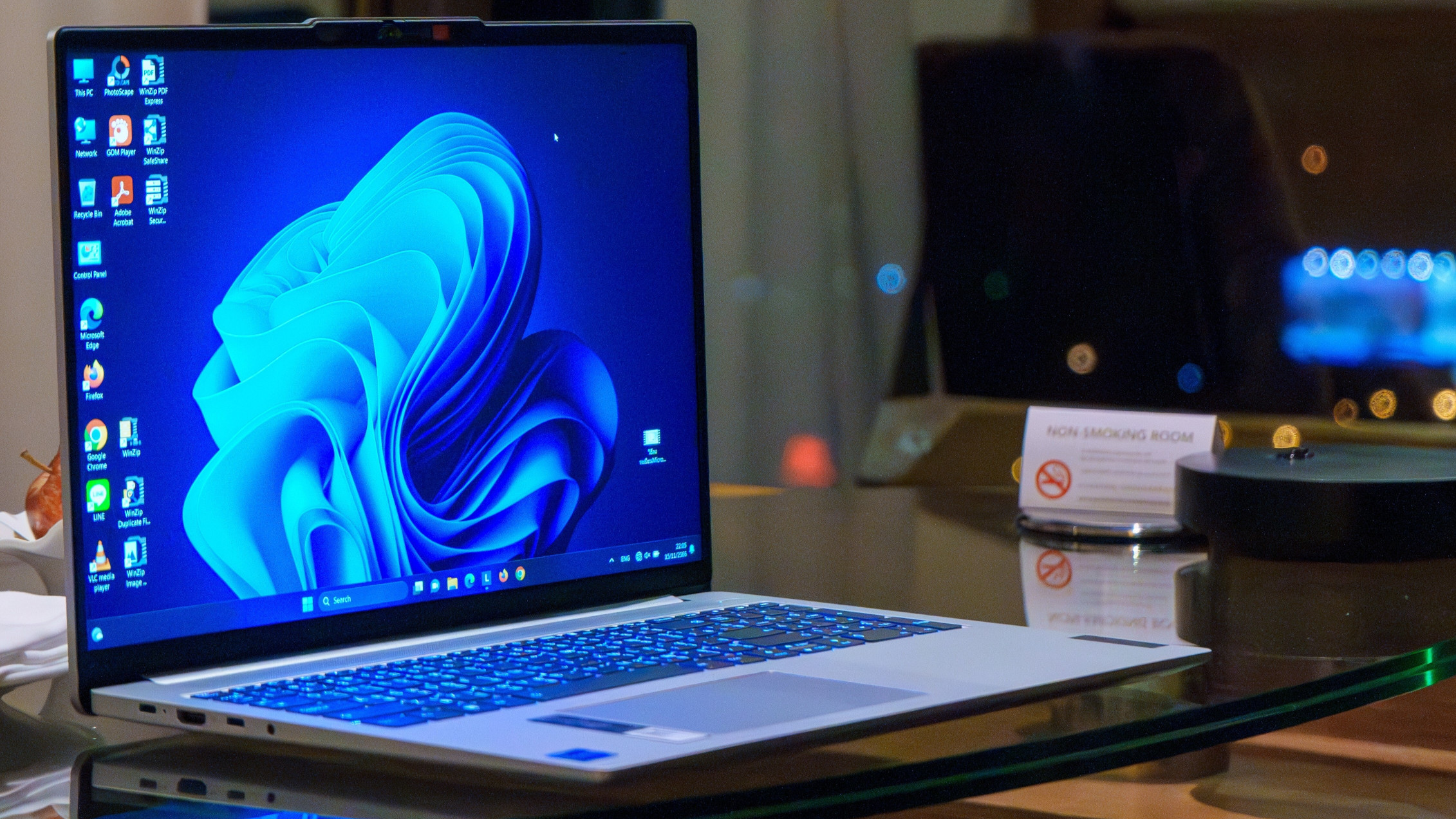Windows 11 2024 update boosts file copying by up to 94% — ReFS and Block Cloning transition from Windows Server to mainstream Windows
ReFS Block Cloning allows data to be copied up to 94% faster, with improved scaling to file size.

Amidst the excitement of the ongoing Windows 11 2024 Update rollout, one particular feature has caught the eye of the development community and even Windows Latest— the addition of ReFS Block Cloning.
ReFS, formerly exclusive to Windows Server operating systems, was first spotted in Windows 11 in July as a hidden option within Build 25276 of the Windows Insider Program Dev Channel. Launched in 2012, ReFS, which stands for "Resilient File System," is an alternative to NTFS, which stands for "New Technology File System," and debuted in 1993. Unlike NTFS, ReFS can't be used for an operating system drive, and it is aimed at developers and server operators who use multiple drives and need storage that is as stable and scalable as possible.
The form that ReFS and its Block Cloning feature have taken within Windows 11 is called "Dev Drive," both to communicate its purpose better and that you need a secondary drive to use the functionality. In statistics provided by Microsoft on a May 21 blog post, Dev Drive with Block Cloning provided an at minimum 18% file copy speed improvement (for a miniscule 1MB file) and at most a whopping 94% file copy speed improvement (for a 1 GB file; 10GB was 92%). Block Cloning is a massive boon for enterprise customers, server operators, app and game developers, and anyone who does a lot of file copying.
Block Cloning isn't the only boon of ReFS, either. Other major features of ReFS include integrated backups and integrity checks, which prevent the need for manual Disk Checks since ReFS does that automatically. ReFS is also more resilient to corruption by isolating and removing only corrupted data when a volume is corrupted, allowing for most, if not all, remaining data to be preserved unless the problem is simply too severe.
ReFS can also further improve performance in various other ways, particularly when used with multiple SSDs and HDDs. It allows storage to be organized into automatically managed "Performance" tiers and "Capacity" tiers for users who need to maximize front-end speed while still having great back-end storage.
Overall, Windows 11's addition of support for ReFS features that have traditionally been restricted to the server looks quite promising—but without a multi-drive storage array akin to a server, you probably won't benefit from them. Even if you have multiple drives, you can't directly convert drives between NTFS or ReFS like you often can with other file systems, so you'll need to reformat any drives you wish to give ReFS appropriately and thoroughly.
Get Tom's Hardware's best news and in-depth reviews, straight to your inbox.

Christopher Harper has been a successful freelance tech writer specializing in PC hardware and gaming since 2015, and ghostwrote for various B2B clients in High School before that. Outside of work, Christopher is best known to friends and rivals as an active competitive player in various eSports (particularly fighting games and arena shooters) and a purveyor of music ranging from Jimi Hendrix to Killer Mike to the Sonic Adventure 2 soundtrack.
-
DougMcC Requires a non-boot second drive ... so the 99% of developers who are working on a laptop can't use it?Reply -
MWeiss89 You assign this to a partition, not a drive. Single-drive machines can still use this by creating a partition beyond their boot partition.Reply
https://learn.microsoft.com/en-us/windows/dev-drive/#resize-an-existing-volume-or-use-unallocated-space-on-an-existing-disk -
DougMcC Reply
Thank you, that makes much more sense.MWeiss89 said:You assign this to a partition, not a drive. Single-drive machines can still use this by creating a partition beyond their boot partition.
https://learn.microsoft.com/en-us/windows/dev-drive/#resize-an-existing-volume-or-use-unallocated-space-on-an-existing-disk -
JamesJones44 This is great addition. Unfortunately, games and applications can't count on this being available of course. The mass majority of your home users are not going to add a second partition to their drive(s).Reply -
thestryker ReFS has had a bug with data integrity streams which means it can actually shuffle around bad data when using multiple disks. To go along with that there was a bug regarding proper logging of data corruption which is applicable to single and multi disk configurations. It was still a problem at the end of last year, but the thread I'd been following isn't active anymore and I haven't had time to find any other updates.Reply
It certainly has advantages over NTFS, but unless this has finally been resolved the data integrity streams aren't one of them. -
neojack Reply
it's a good practice to install the games in a separated partition. Even Steam has a menu dedicated to this, so i think a lot of people do it.JamesJones44 said:This is great addition. Unfortunately, games and applications can't count on this being available of course. The mass majority of your home users are not going to add a second partition to their drive(s).
The main problem with installing games on the system partition, is that the user can fill the partition up and render windows unable to boot, essentially bricking the PC. -
kyzarvs Reply
There are precisely 8 million and 4 ways to fix this - the first being just boot it. Even a full Windows partition will boot to a point where you can delete some stuff - 'bricking' is a touch alarmist. We had this recently with a new customer that had managed to fill their server C drive while leaving the data drive empty...neojack said:it's a good practice to install the games in a separated partition. Even Steam has a menu dedicated to this, so i think a lot of people do it.
The main problem with installing games on the system partition, is that the user can fill the partition up and render windows unable to boot, essentially bricking the PC. -
jp7189 ReFS (for me) is a minimum requirement when working with large files. I have a 600TB backup server and because of the data size can only do incrementals forever. A synthetic full backup is not possible on NTFS for time and space reasons. With ReFS I make a synthetic full every night because it uses almost no space and processes very quickly. Win2016 had a SMH default behavior of not freeing unused blocks, but I've not had any issues whatsoever with 2019.Reply -
Nikolay Mihaylov It is not clear to me what exactly is the new stuff here. DevDrive seems to be old news. I have it in 23H2. Its UI and the articles I found about it are very annoying. For instance, it insists in using unallocated space. Why not use any existing partition (i.e. already allocated space) and wipe it on command. Also, does it already use ReFS in 23H2 or that is what's new in 24H2. How can I combine a couple of disks with ReFS to use as a single DevDrive in, say, RAID0 or RAID5? Can I do it with the traditional Dynamic Disks infrastructure with NTFS/ReFS on top?Reply -
jp7189 Reply
I believe the preferred method is to use a storage spaces pool. Be warned that parity adds a monster performance penalty and mirror wastes a lot of space.Nikolay Mihaylov said:It is not clear to me what exactly is the new stuff here. DevDrive seems to be old news. I have it in 23H2. Its UI and the articles I found about it are very annoying. For instance, it insists in using unallocated space. Why not use any existing partition (i.e. already allocated space) and wipe it on command. Also, does it already use ReFS in 23H2 or that is what's new in 24H2. How can I combine a couple of disks with ReFS to use as a single DevDrive in, say, RAID0 or RAID5? Can I do it with the traditional Dynamic Disks infrastructure with NTFS/ReFS on top?